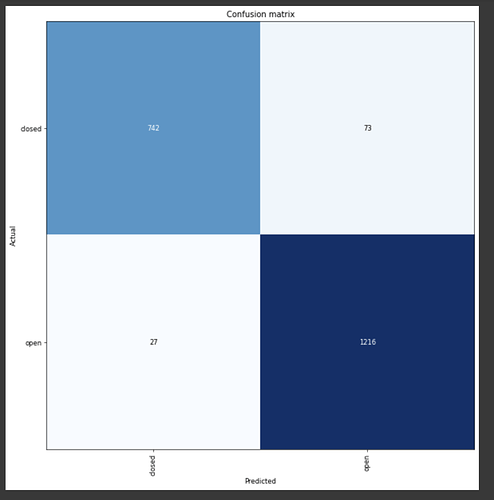I have a model I trained in fastai. It achieves 95% accuracy, but my predictions are always the same class. I’ve never had this problem using rgb images, so I am assuming something is wrong with the fact that the data is grayscale.
For reference, the model was trained on gray scale images that were already in shape (24, 24, 3). When I run inference on test images, they are already (24,24,3). I don’t know if this has any effect, but when I look at the print out from my data object, I see images in shape (3,24,24), see print out below. I’ve tried getting my test images into this shape (swapping the axis) but they are no longer accepted as proper input. What do I do?
Here is my training code:
data = ImageDataBunch.from_folder(path, train='train', valid='valid', size=24, bs=64, num_workers=8)
learn = cnn_learner(data, models.resnet34, metrics = [accuracy])
learn.fit_one_cycle(4)
learn.unfreeze()
learn.lr_find()
learn.recorder.plot(suggestion=True)
learn.fit_one_cycle(2, max_lr=slice(3e-7, 3e-6))
learn.export('model.pkl')
Now for inference:
l = load_learner('', 'model.pkl')
r = random.randint(0,100)
t = glob.glob('fastai_format/test/pos/*')[r]
img = cv2.imread(t)
print(img.shape)
This gives (24,24,3)
And for the actual prediction:
pil_im = PImage.fromarray(img)
x = pil2tensor(pil_im ,np.float32)
l.predict(Image(x))
This gives me:
(Category tensor(1), tensor(1), tensor([0., 1.]))
I get class 1 every time. Its a 2 class problem. I even get class 1 everytime if I run inference on training data. The model yields 95% so this is confusing.
What am I doing wrong?
Extra info: Here is the print out for data:
Train: LabelList (9603 items)
x: ImageList
Image (3, 24, 24),Image (3, 24, 24),Image (3, 24, 24), ...
...
I am using fastai version 1.0.61.
